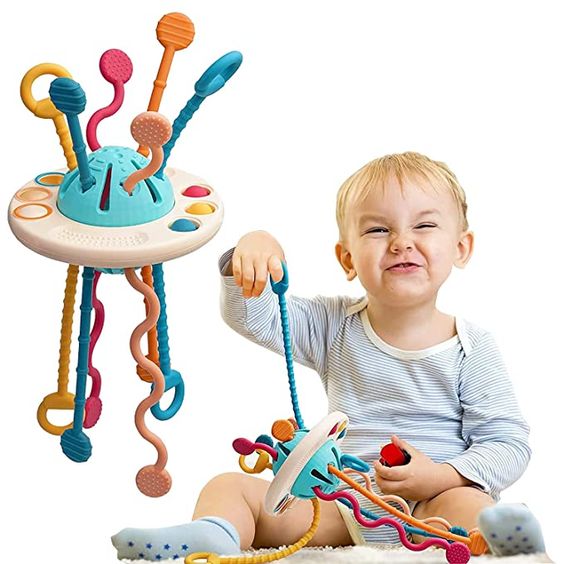In an era dominated by digital devices and interactive screens, there’s something uniquely endearing about traditional toys that spark imagination without the need for batteries or Wi-Fi. Among these cherished classics is the string pull toy, a simple yet magical invention that has delighted children for generations. Often made of wood or plastic and decorated in vibrant colors, pull string toys have stood the test of time, evolving through the years while retaining their original charm.
What Are Pull String Toys?
Pull string toys are mechanical toys that operate when a string is pulled, often producing movement, sound, or both. The mechanism behind them can vary—from rotating gears to wind-up springs—but the magic lies in their simplicity. When a child pulls the string, they’re rewarded with something delightful: a talking doll, a spinning top, or an animal that waddles across the floor.
While today’s toys often rely on advanced electronics, toy pull string designs are refreshingly straightforward. They often feature a cord attached to a wheel or crank inside the toy. Pulling the string triggers a mechanical response, making the toy walk, talk, sing, or move in fun and surprising ways.
A Brief History of the String Pull Toy
The string pull toy has its roots in the 19th century, when European toy makers began incorporating simple string and gear mechanisms into wooden figures. These early versions were handmade, often painted by artisans, and usually resembled animals or vehicles.
One of the most iconic uses of the toy pull string mechanism came in the mid-20th century, particularly with the rise of talking dolls and action figures. In 1960, Mattel introduced the famous Chatty Cathy doll, which spoke different phrases when a string was pulled from her back. This innovation revolutionized the toy industry and made pull string toys immensely popular.
Over the decades, manufacturers continued to develop new types of string-activated toys—from locomotives that moved on tracks to animals that made lifelike sounds—all driven by the simple yet effective pull-string mechanism.
Why Pull String Toys Still Matter Today
Despite the surge of interactive apps and robotic toys, pull string toys maintain a significant place in child development and play. Here’s why they continue to captivate children and parents alike:
- They Foster Imagination and Creativity
Unlike high-tech toys that often dictate how a child should interact, a string pull toy offers open-ended play. Whether it’s imagining a dog on a walk or a dragon taking flight, children bring their own stories to life.
- They Are Educational
Some toy pull string models incorporate counting, alphabet learning, or language skills. For example, speaking dolls or alphabet trains that produce letters or numbers when the string is pulled help develop early learning skills.
- They Encourage Physical Activity
A large portion of pull string toys require children to move around. Whether it’s a pull-along duck or a clacking crocodile, these toys get kids off the couch and help improve motor skills and coordination.
- They Promote Fine Motor Skills
Pulling the string, holding the toy, and even winding mechanisms help young children develop hand-eye coordination and grip strength—essential skills in early childhood development.
Types of Pull String Toys
The variety in the world of pull string toys is remarkable. Here are some of the most popular types:
- Talking Toys
These include dolls, animals, and characters that speak when the string is pulled. Some toys even feature multiple phrases or songs, encouraging verbal development and social interaction.
- Pull-Along Toys
Typically designed for toddlers, these toys have wheels and can be dragged along using a string. Classic examples include toy dogs, trains, and even little carts carrying blocks or animals.
- Musical Toys
Certain toy pull string models produce melodies or sound effects, helping children develop a sense of rhythm and musicality.
- Animated Toys
When the string is pulled, these toys perform an action—flapping wings, spinning, jumping, or dancing. They’re often a big hit at birthday parties and during group play.
Modern Twists on a Classic Design
While traditional pull string toys maintain their appeal, modern manufacturers are innovating within this classic format. Eco-conscious brands are creating wooden pull toys with sustainable materials and non-toxic paints. Some toys now integrate gentle electronic enhancements—such as light-up features or enhanced sound quality—while still relying on the manual pull-string mechanism.
For example, a modern string pull toy might feature animal sounds recorded from real wildlife, or speak multiple languages for bilingual learning. Others are themed around popular characters from children’s media, combining the familiarity of favorite shows with the interactivity of traditional play.
Pull String Toys in a Digital World
In an increasingly digital world, there’s a growing movement among parents and educators to return to more tactile, sensory-based forms of play. Pull string toys are often recommended for screen-free zones, preschool classrooms, and even pediatric therapy sessions. Their gentle pace and engaging interactivity are perfect for helping children slow down and stay present in their environment.
Some therapists use pull string toys to encourage communication in children with speech delays. Others use them as reward-based tools for children with sensory processing challenges, due to their predictable and calming mechanical responses.
Also check: https://montessorivision.com/
How to Choose the Right String Pull Toy
When shopping for a toy pull string, consider the following:
- Age Appropriateness: Choose toys designed for your child’s developmental stage. Babies might enjoy soft plush toys that talk, while toddlers love pulling animals along the floor.
- Material Safety: Look for BPA-free plastic or sustainably-sourced wood. Ensure the string is securely attached and not a choking hazard.
- Durability: Since these toys often involve movement, opt for well-constructed models that can withstand enthusiastic play.
- Educational Value: Many pull string toysincorporate counting, colors, or sound recognition. Pick one that complements what your child is learning.
Conclusion
Though trends come and go, pull string toys have endured as a symbol of timeless play. They combine mechanical ingenuity with creative potential, offering children a hands-on, imaginative experience that digital alternatives often can’t match. Whether it’s the soft voice of a plush toy, the chug-chug of a wooden train, or the wagging tail of a puppy on wheels, a string pull toy provides more than just entertainment—it creates memories, fosters growth, and bridges generations.
As parents look for ways to engage their children in meaningful play, it’s clear that the humble toy pull string still has a lot to offer. Its charm may be rooted in the past, but its relevance is very much of the present—and likely, the future too.

















